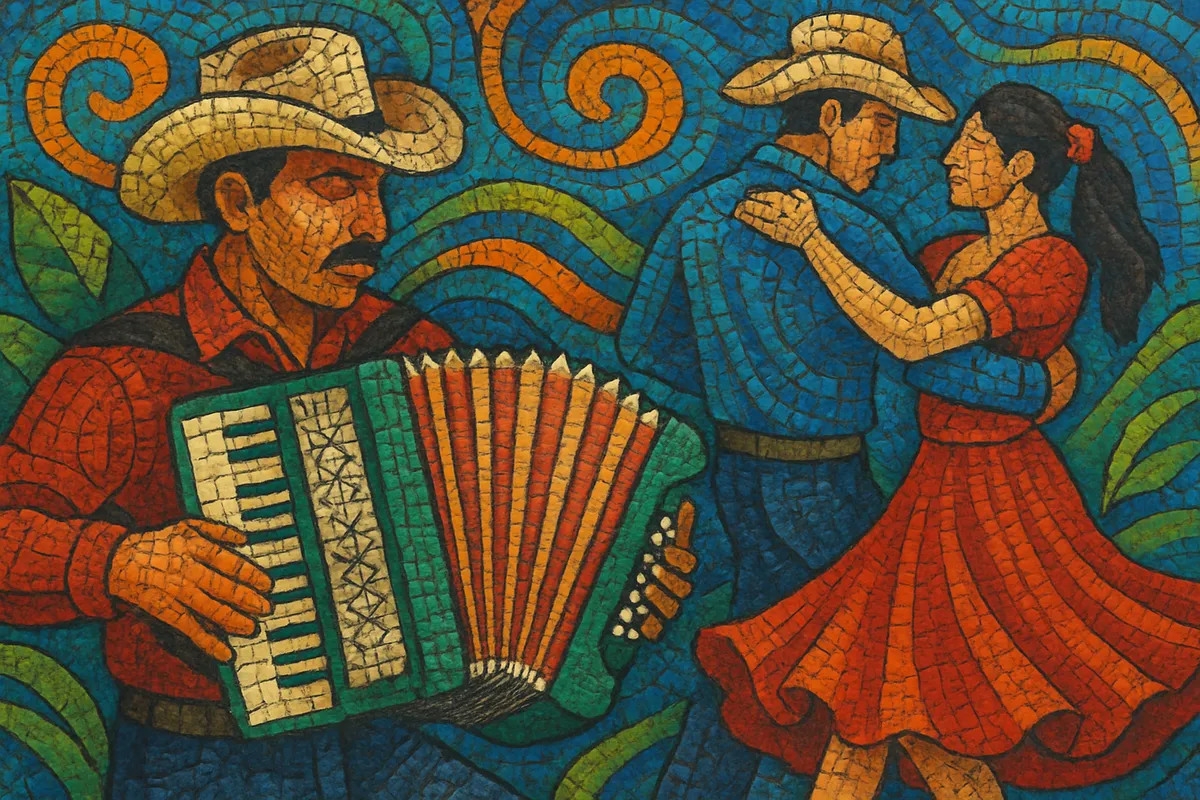Cumbia norteña mexicana is a northern Mexican take on cumbia that blends the Colombian-born rhythm with the instrumentation, feel, and dance culture of norteño and grupera.
It is driven by accordion lead lines, bajo sexto rhythm guitar, electric bass, and drum kit, often complemented by güiro or cowbell, and sometimes saxophone or keyboards. The groove keeps cumbia’s characteristic off-beat syncopation while adopting a brisk, two-step-friendly pulse common in the Mexican north and along the Texas border.
Songs typically use simple, catchy harmonies (I–IV–V with frequent dominant sevenths), memorable accordion hooks, and verse–chorus structures. Lyrics range from festive parties and dance-floor humor to everyday border life, love, and migration, delivered with call-outs and crowd-response energy tailored to bailes and rodeos.
Cumbia reached Mexico mid‑20th century via records and touring Colombian acts. In the north, musicians steeped in norteño—already shaped by polka, waltz, and schottische—adapted cumbia’s syncopated beat to local dance customs and to the accordion–bajo sexto combo. By the 1970s, bands in Nuevo León, Coahuila, Tamaulipas, and the Texas border were recording cumbias with a distinctly norteño accent.
The 1980s–1990s grupero boom amplified the style. Northern groups folded cumbia into their repertoires, polishing arrangements with electric bass, drum kits, and keyboards while keeping accordion front and center. Radio and large bailes popularized an agile, party-ready cumbia that fit seamlessly alongside rancheras, corridos, and ballads in regional sets. Hits by border and Monterrey-area bands cemented the sound across Mexico and the Mexican–American circuit.
Through the 2000s, cumbia norteña mexicana remained a dance-floor staple at rodeos, fairs, and clubs. Younger acts emphasized punchier drums, brighter accordion tones, and crowd shout‑outs, while veteran groups continued to release cumbias alongside their norteño and grupero material. The style’s footprint is heard across the Regional Mexicano ecosystem and helped pave the way for related dance crazes and fusions, from Chicago‑based duranguense scenes to electronic reinterpretations that borrow its rhythms and hooks.


